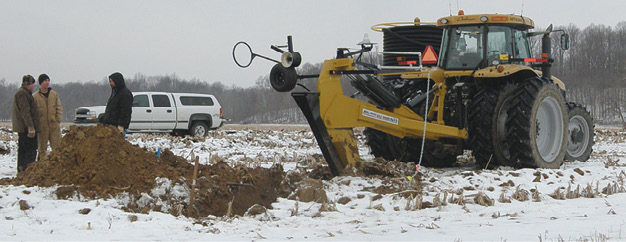No-Till Farmer
Get full access NOW to the most comprehensive, powerful and easy-to-use online resource for no-tillage practices. Just one good idea will pay for your subscription hundreds of times over.

The economics of installing drainage systems on poorly drained farm ground are clearly positive for most no-tillers.
And with crop prices and farm incomes at historic highs, many farmers are investing in drainage to boost yields further or reduce their taxable income.
For a studious, highly motivated no-tiller, there might be potential to capitalize on this trend and turn tiling into a sideline enterprise. But deciding whether or not to pull the trigger requires a sharp pencil and some self-examination.
High crop prices and the ability to expand production without expanding acres have driven demand for tiling installation to an all-time high, says Ohio State University agricultural engineer Larry Brown.
“The demand for tile drainage is huge all across the country,” he says. “Contractors are busy and more and more farmers are purchasing tractor-pulled tiling plows and doing it themselves.
“Whether that’s the cheaper route is debatable because it heavily depends on individual situations. Farmers who are considering that option, though, need to understand that there can be a pretty big learning curve.”
For Greensburg, Ind., no-tiller and strip-tiller Roger Wenning, tiling has evolved into a significant enterprise that has enabled him to bring his sons, Nick and Kevin, into the family operation.

“The farm is just not big enough to support everybody,” says Wenning, who uses cover crops extensively in his corn-and-soybean operation. “I had been tiling for myself for a long time, and doing it commercially was a great fit for us — and we…